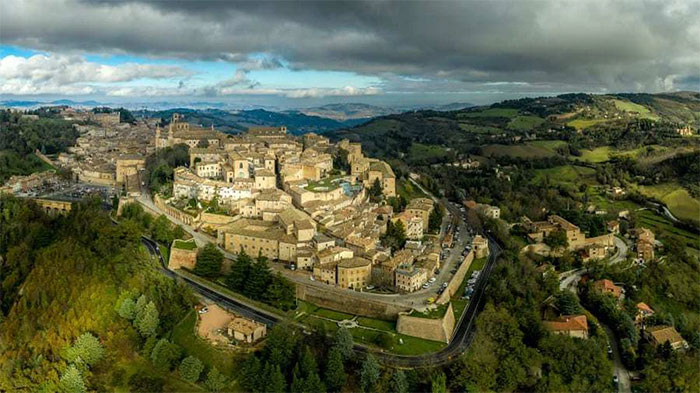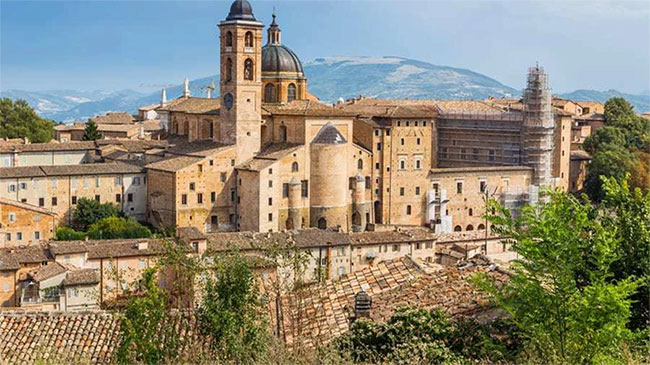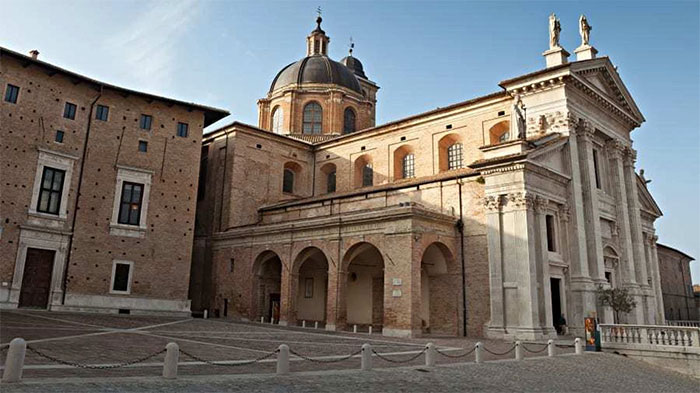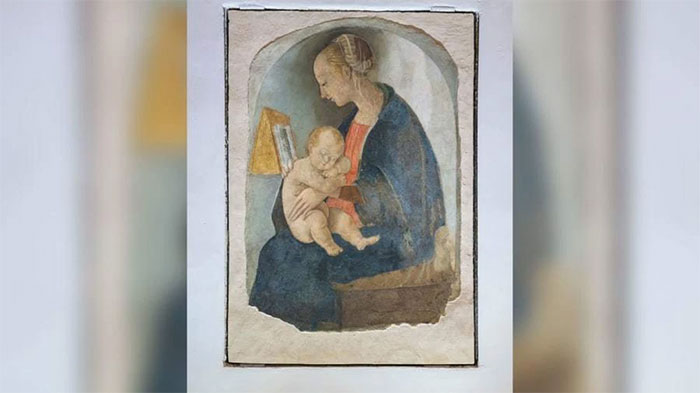Urbino, a small city in the Marche region of central Italy, is often overlooked by tourists. However, during the 15th century, it was a powerhouse of the Renaissance.

The city of Urbino.
The region was ruled by Federico da Montefeltro, one of the most cultured leaders in Italy.
Remarkably, after six centuries, Urbino looks almost unchanged, if not identical to what Federico built in the past.
Classic bars with Renaissance awnings, steep streets meant for horses rather than cars, and the Palazzo Ducale, a castle built for Federico, complete with intricate twin towers perched on the hillside.

Palazzo Ducale

Well-preserved Renaissance buildings
Palazzo Ducale is situated in a beautiful location, seemingly impregnable. Its towering walls, balconies, and spires stand tall. Inside the walls, there is a charming courtyard, a lush garden, and a public library open to the people of Urbino.
On the upper floors, artists like Botticelli adorned the artistic inlaid doors, and hanging on the walls are paintings by prominent artists with progressive ideas of the time. These ancient artworks remain intact to this day.
Today, Palazzo Ducale serves as a museum for the Marche region and is the 28th most visited museum in Italy. It houses numerous works of art by Raphael, Giovanni Santi, Titian, Paolo Uccello, and Piero della Francesca…
When discussing Urbino, one cannot overlook Raphael, regarded as the great master of Renaissance painting. Raphael’s house, located just a five-minute walk from Palazzo Ducale, is still open to the public.

Artwork by the famous painter Raphael
In Raphael’s bedroom hangs the mural “Madonna and Child”, which he painted during his teenage years.
The renowned artist once shared that Urbino was the foundation for his vision of beauty.
While many other Renaissance cities in Italy have been overshadowed by modern suburbs or overwhelmed by excessive tourism, Urbino has maintained its original form.
Luigi Gallo, from the art gallery inside Federico’s palace, stated: “The town’s geographical location has helped preserve the historic center completely, saving it from large construction projects. Here, every beauty and architectural work from the Renaissance period still remains intact.”
The historical center occupies less than 1 square kilometer but is rich in heritage, historical significance, culture, art, and European architecture.


















































